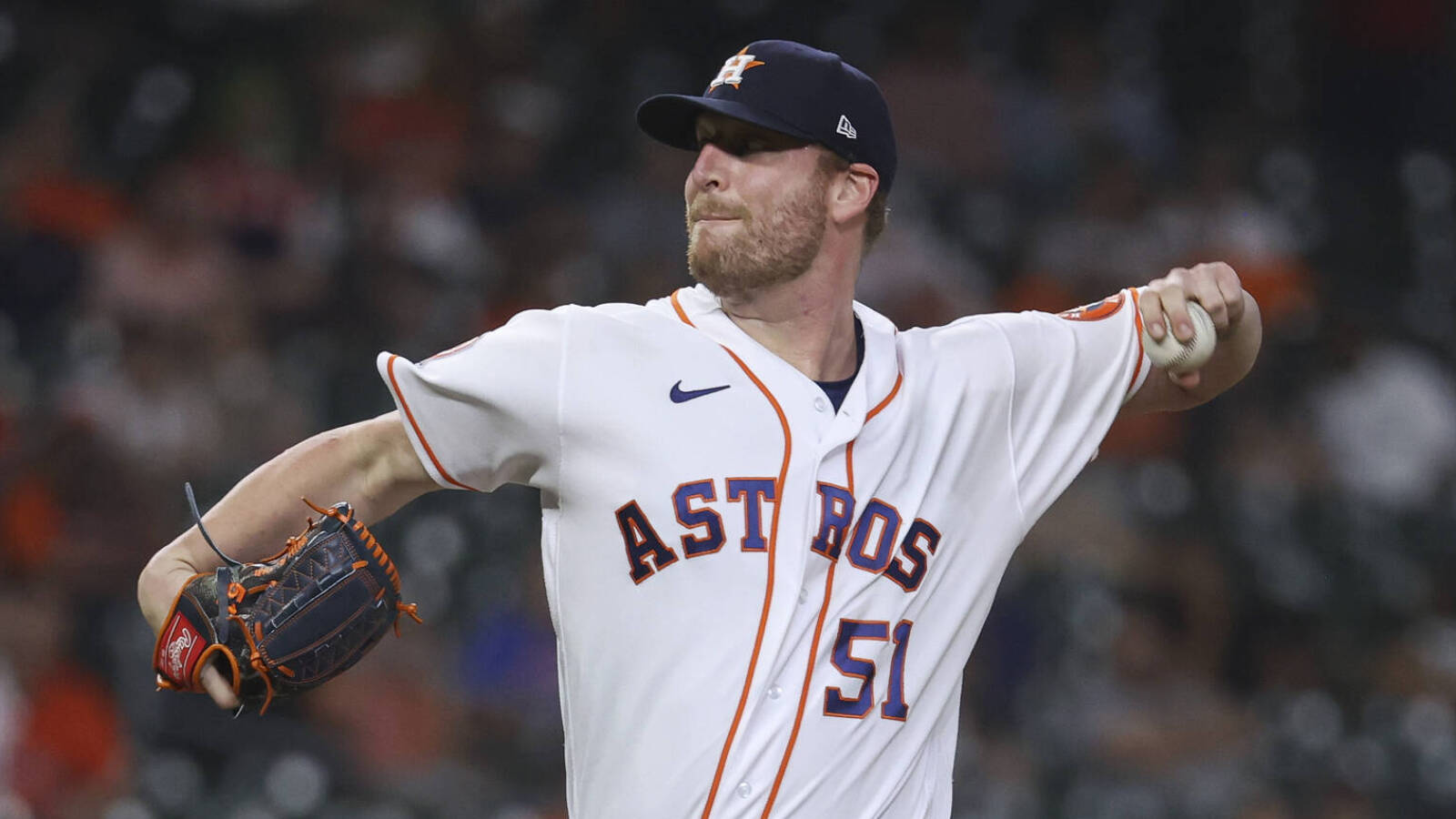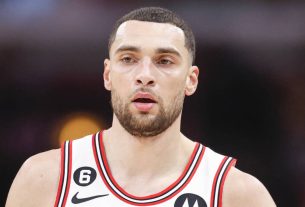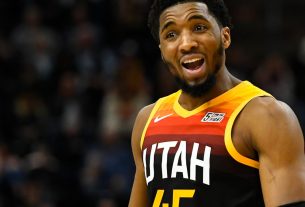Back on Aug. 1, when the Astros and Braves agreed to a swap of veteran pitchers Jake Odorizzi and Will Smith, the move was met with some confusion by Astros fans. Odorizzi hadn’t endeared himself with a rocky start to his tenure in Houston, nor his public gripes about the team’s usage of him (specifically, a quick hook even on effective days), but he’d vastly outperformed Smith to that point in the season.
At the time of the trade, Odorizzi had a 3.60 ERA in 60 innings, and while it was accompanied by a lackluster strikeout rate, that was partially offset by a strong walk rate. Odorizzi wasn’t a star by any means but had been a serviceable back-of-the-rotation starter. Houston, however, had six options ahead of him on the depth chart and felt a need for some left-handed help in the ’pen. Some ’Stros fans took issue with the return of Smith, in particular, though — and understandably so. He’d posted a tepid 4.38 ERA to that point in the season, and the under-the-hood numbers were worse. Smith’s 24% strikeout rate was his lowest since moving to the bullpen, and his 12.3% walk rate was a career-worst. He was averaging 1.70 homers per nine innings pitched, and metrics like FIP (5.22) and xFIP (4.76) didn’t view him favorably.
Part of the swap was surely the similarities in their 2022 contracts. Smith was owed the balance of a $13M salary and had a $1M buyout on a 2023 option. Odorizzi was earning just $5M but had another $2.5M of easily attainable incentives, plus a weighty $3.25M buyout on a 2023 option. More at the heart of the issue, however, it seems the Astros viewed Smith as someone they could revitalize with some tweaks.
That’s indeed how things played out, though the changes were more subtle than glaring. Smith largely scrapped his curveball in Houston, dropping from an 11.9% usage rate to just 3.6%. He threw slightly fewer fastballs (41.8% in Atlanta, 39.1% with Houston) and upped the usage on his slider, throwing it at a career-high 52.1% of the time. With the ’Stros, Smith also dropped both his vertical and horizontal release points, although not dramatically.
There was no major spike in spin rate — the spin on his four-seamer dipped slightly following the trade — and Smith didn’t begin throwing harder or unveil a new pitch that changed his fortunes. Rather, the subtle tweaks to his mechanics and a more acute focus on two pitches seemed to turn his fortunes. He located his slider more effectively (pre-trade, post-trade) and, crucially, avoided the heart of the plate far more often with his four-seamer (pre-trade, post-trade). Smith operated far more regularly and more effectively in the top third of the strike zone — and just above it.
Unsurprisingly, his swinging-strike rate jumped from an already-sharp 13.6% in Atlanta to a massive 17.3% with Houston. He was able to spot both pitches more effectively both on the fringes of the zone and within the zone; his first-pitch strike rate spiked from 63.2% with the Braves to 72.2% with the Astros. His walk rate plummeted from 12.3% to 4.4%.
Smith’s time with the Astros proved brief, but in two months with Houston he tossed 22 innings of 3.27 ERA ball with a 26.7% strikeout rate and a 4.4% walk rate. After averaging 1.7 homers per nine frames with Atlanta, he allowed just two in 22 innings with Houston (0.82 HR/9). If anything, Smith was bizarrely unlucky on balls in play as an Astro; he yielded a sky-high .350 average on balls in play. Smith wasn’t on the Astros’ ALDS or ALCS roster — perhaps in part due to a heavily right-handed Yankees lineup — but was added to the World Series roster. He did not, however, pitch in a game. Houston declined his option at season’s end, favoring a $1M buyout over a $13M salary next season.
That outcome seemed obvious, but it’s hard to ignore the high note on which Smith ended the regular season. The lefty overwhelmingly improved his command, missed more bats, issued fewer walks, and yielded fewer home runs. He still wasn’t used in many high-leverage spots by the Astros, but that’s in part due to their generally strong bullpen. Over his final 17 outings of the season, Smith pitched to a 2.35 ERA with an 18-to-2 K/BB ratio in 15 1/3 innings.
However, because Smith was generally used in lower-leverage spots and because he didn’t pitch in the postseason, his turnaround in Houston flew largely under the radar. On the one hand, it’s arguably a damning reality that he was passed over in leverage situations and omitted from two of the Astros’ three postseason rosters. On the other hand, the results when he did pitch were excellent, and Houston had four other relievers with a sub-3.00 ERA (and five others with a FIP of 3.02 or better). Smith was a luxury but not someone they necessarily needed to acquire to plug into those leverage positions for lack of better options.
As was the case in the Houston bullpen, Smith is again somewhat lost in the shuffle of the offseason’s free-agent class. Smith was never going to get another contract along those lines, but he’s perhaps closer to the next tier of lefties than one might expect when looking at his season-long numbers. Andrew Chafin and Matt Moore both had better seasons, and Chafin in particular seems like he should command a strong contract after his past couple of years of performance. Smith’s end to the season, however, was quite strong, and if his next team gets more of the Houston version than the Atlanta version, he’ll likely be a bargain.



